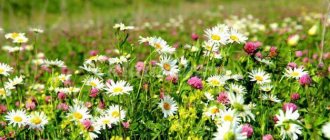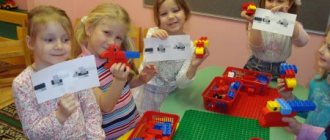Goal: to consolidate students’ knowledge about spring and spring signs.
Tasks:
Educational:
- continue to teach students to form the genitive case of plural nouns
- develop the ability to coordinate words in a sentence, correctly use prepositions in speech
- improve students’ skills to participate in dialogue, answer questions with complete answers
- enrich students’ vocabulary on the topics “Migratory Birds” , “Wild Animals” , “Insects”
- consolidate the skills of correct pronunciation of sounds [Z], [Zh], [C].
Educational:
- develop phonemic awareness in students
- develop gross motor skills, coordination of speech and movement
- develop memory, auditory attention.
Educational:
- cultivate a caring attitude towards nature and a friendly attitude towards each other.
Preliminary work:
Watching birds, trees, melting snow; conversation about spring; asking riddles about animals, plants, birds, insects; reading poems about spring.
Methods and techniques:
Dynamic exercise “On the paths...” , questions to the students, answers from the students, reading a poem by the student, reciting a simple phrase, physical education, didactic game “One - Many” , musical and rhythmic composition “Exercising funny animals” . Music by M. Eremeeva, lyrics by S. Eremeev, listening to the audio recording “Voices of Birds” , performance of the song “Spring Tale” music by T.A Simakova, lyrics by A.S. Shalamonov using children's musical instruments) analysis of the work of pupils by the teacher, self-analysis by the pupils.
Materials and equipment:
- interactive device
- laptop
- music Center
- audio recording “Sounds of nature”
- a tray with suns and a tray with clouds
- musical instruments
- animal masks and caps.
Vocabulary work: demi-season clothing, hibernate.
Motivation: personal interest.
Part I
(pupils enter the hall to the music and stand near the chairs). Speech therapist: Children, today we will take a walk in the spring forest. We will see a lot of interesting things in the forest.
1. Dynamic exercise “Along the paths...”
Speech therapist: I invite you to go for a walk in the spring forest. Guys, we can't find more interesting adventures
Stand next to each other, hold hands tightly. (pronounced together with the teacher) Along the paths, along the paths
Let's go for a walk in the forest. Maybe in the spring forest we will find someone. (pupils take each other’s hands and follow the teacher in a round dance step, “snake” (they approach the chairs, sit down)).
(The curtain opens)
Speech therapist: We came with you to the forest. Slide No. 1
Pupil: (reads a poem)
Hello, forest, dense forest, Full of fairy tales and miracles. Who is hiding in your wilderness? What kind of animal, what kind of bird?
Open everything - don’t hide it. You know, we are our own.
Part II.
Speech therapist: Children, tell me what time of year it is now?
Pupils' answers. (Now the time of year is spring)
Speech therapist: Name the signs of spring.
Pupils' answers: - the snow is melting, streams are flowing;
- the sun is shining brighter
- birds fly in and build nests
- insects appear
- animals wake up after hibernation
- small buds and tender leaves appear on trees and shrubs
- the first spring flowers appear
- people put on spring clothes.
Speech therapist: Well done, you correctly named the signs of spring. It is so quiet in the forest that the inhabitants of the forest cannot be seen or heard. I suggest you wake them up. Do you agree?
Pupils' answers: (Yes)
Speech therapist: We will wake up the insects first.
First, let's wake up the mosquitoes. Sing the little mosquito's song.
Pupils: (sing the song of a little mosquito: z-z-z-z-z). Slide number 2
Speech therapist: Now the song of a big mosquito.
Pupils: (singing the song of a big mosquito: Z-Z-Z-Z). Slide number 3
Speech therapist: Well done! How beautifully you sang.
Now let's wake up the beetle.
Sing the big bug's song.
Pupils: (singing the song of a big beetle: Zh-Zh-Zh-Zh). Slide number 4
Speech therapist: And now the little bug’s song.
Pupils: (sing the song of a little bug: w-w-w-w) Slide number 5
Speech therapist: We will also wake up the grasshopper. I suggest
chirp like grasshoppers.
Pupils: (chirp like grasshoppers: tsika-tsika-tsika). Slide number 6
Speech therapist: Name the insects that we woke up?
Pupils' answers: (We woke up a mosquito, a beetle, a grasshopper).
Speech therapist: Tell me what other insects you know that live in the forest?
Pupils' answers: (bee, wasp, fly, etc.) Speech therapist: Correct. But in addition to them, animals live in the forest. Look at the screen. Name the animals. Slide No. 7 Pupils’ answers: (bear, fox, hare, hedgehog, elk, wolf, squirrel).
Speech therapist: What animals are these? Pupils' answers: (these are wild animals)
Speech therapist: Why are these animals called wild?
Pupils' answers.
Speech therapist: Name the animals that hibernate? Pupils' answers: (bear, hedgehog, badger, snakes, frogs, lizards).
Speech therapist: I propose to conduct a musical warm-up “Charging funny animals” .
(pupils get up from their chairs, put on hats, stand in a circle)
The musical and rhythmic composition “Charging the Merry Animals” . Music by M. Eremeeva, lyrics by S. Eremeev
Speech therapist: Which animals woke up after hibernation?
Pupils' answers: (we woke up the bear(s), hedgehog(s), snake(s), badger(s), frog(s) or woke up.
Speech therapist: Children, what a great fellow you are for waking up the animals.
(audio recording of birds' voices sounds)
Speech therapist: Children, what did you hear?
Pupils' answers: (we hear the voices of birds)
Speech therapist: Look at the screen. Slide number 8
Name the birds you see on the screen.
Pupils' answers: (rook, swallow, nightingale, starling, cuckoo).
Speech therapist: What kind of birds are these?
Pupils' answers: (these birds are migratory).
Speech therapist: I suggest playing the game “One - Many”
In order for us to start the game, we need to unanimously say to everyone: “ra-ra-ra the game begins”
Speech therapist: Look at the screen. Slide number 9 One nightingale, many...?
Pupils' answers: (nightingales). Slide No. 10
Speech therapist: How many rooks do you see on the screen?
Pupils' answers: (I see one rook). Slide No. 11
Speech therapist: How many rooks are there now? Slide number 12
Pupils' answers: (Now I see a lot of rooks)?
Speech therapist: Look at the screen. One starling, many...? Slide number 13
Pupils' answers: (starlings). Slide number 14
Speech therapist:. One cuckoo, many...? Slide number 15
Pupils' answers: (cuckoos). Slide No. 16
Speech therapist: One swallow, many...? Slide number 17
Pupils' answers: (swallows). Slide No. 18
(audio recording of insects, birds: migratory)
Speech therapist: Well done! You named the birds correctly. Tell me, what kind of birds are these?
Pupils' answers: (These birds are migratory; we named migratory birds). Speech therapist: Well done! Now I propose to please all the inhabitants of the forest with a “Spring Tale” .
Performance of the song “Spring Tale” music by T.A Simakova lyrics by A.S. Shalamonov using children's musical instruments)
(Pupils take instruments, perform a song, after performing the song
put down the tools and stand in a circle).
Speech therapist: Children, you are so great. They sang loudly and played musical instruments rhythmically. How pleasant it is to be in such a beautiful spring forest. But it's time for us to return to kindergarten.
To return to kindergarten, you need to say the words with your eyes closed. Listen. (One, two, three, turn around and you will find yourself in kindergarten).
We open our eyes.
(the teacher and students repeat the words)
(The curtain closes)
Part III.
Speech therapist: Open your eyes. We are back in kindergarten. Where we were?
Pupils' answers: (We were in the forest) Speech therapist: Who did we wake up in the forest?
Pupils' answers: (we woke up the insects). Speech therapist: Name them?
Speech therapist: Who else was woken up? Pupils' answers: (list animals).
Speech therapist: What are the names of the birds that come to us in the spring?
Pupils' answers: (These birds are called migratory).
Speech therapist: Children, if you liked it in the forest, if you played well, then take the sun. If you didn’t like walking in the forest and playing, then take a cloud.
(Pupils take the sun or a cloud).
Speech therapist: Children, I invite you to join the group.
Summary of an educational lesson in the senior group on the topic: Birds in spring
Lesson in the senior group on the topic: Spring
Author: Irina Filippovna Yumshanova, teacher at the Savinsky Kindergarten, Savino village, Perm Territory, Karagay district. Description of the material: I offer you a summary of a lesson for children of the older group (5-6 years old) on the topic “Birds in Spring.” This material will be useful to teachers of the senior group. This NNOD outline aims to promote children's cognitive development.
Goal: To promote the cognitive development of children Objectives: 1) Expand knowledge about the life activities of migratory birds; 2) Teach the ability to write a short story about birds; 3) Foster a caring, caring attitude towards birds; 4) Develop imagination; Progress of the lesson Educator: Guys, today I suggest you find yourself in the spring forest and listen to the sounds of the spring forest. What did you hear? Children: The birds sing, cheerfully... Educator: Of course, the birds sing their songs cheerfully and loudly. Birds appeared on the street that were not there in winter; where did so many birds come from? Children: from warm countries, from the south. Educator: This is the main miracle of spring - it is in spring that our feathered friends fly to us, bringing spring on their wings. What do children call the birds that fly back to us in the spring? Children: migratory. Educator: pay attention to the miracle - a tree, but no birds are visible on it. I suggest you sing a call to call the birds. The call is “Little birds, little birds, come to us, a clear spring, a red spring, bring us.” At this time, migratory birds appeared on the tree. Educator: What birds did you recognize? Children: nightingale, starling, swallow, rook Teacher: also cuckoo, oriole, lark. Guess the riddle about one of these birds: “Flew to us with warmth Having traveled a long way Sculpts a house under the window From grass and clay” Who is this riddle about? Children: Swallow Educator: Look, the swallow has black wings, head, back, white breast, small, sharp nose. The tail is like two pigtails. Guess the following riddle: “Anyone will recognize his trills, He sings other people’s songs, An amazing singer Our beloved by all...” Children: starling Educator: Look what the starling looks like: it is black, its beak is sharp, its breast is speckled with white. And here is the beautiful oriole, she has yellow plumage, her wings and the tip of her tail are black. Children, together with the teacher, examine and compare other birds. Educator: What do birds make us happy about? Children: songs, beauty Educator: Yes, birds delight us with their plumage, wonderful colors, their singing, what do you guys think the birds sing about in the spring? Children: they are probably happy that they have returned home. Educator: Of course, they are glad that they returned to their homeland, they sing about what wonderful countries they have seen, about how difficult their path home was, they are glad to meet you. I suggest you now play the game “Magic Transformations” (We turn into a migratory bird and make up a short story about this bird) Guys, what will happen if the birds do not return to us in the spring? Children: we will be sad without them, there will be no one to sing songs. Educator: There will be no one to protect parks, gardens, forests from harmful insects. Insects will eat all the vegetation and destroy the harvest of vegetables and fruits. There will be no one to distribute the seeds of berries, herbs, and flowers. We won't hear their songs. Therefore, we must protect the birds and help them. The teacher reads the poem “So that the blooming gardens do not die in vain from harmful insects Always at any time of the year Take care of the birds, friends.”
In the spring, birds have a lot of worries, they build nests and hatch chicks.
Do you know what birds build nests from? Children: from grass, branches, leaves. The teacher shows pictures of various nests and talks about them.
1. A swallow makes a nest under the ridge of the roof, crushes clay with its nose, bathes it in the river, carries it with its nose.
2. The song thrush’s nest is simply a sight to behold, the outside is decorated with green moss, the inside is smooth like a cup: made of wood dust with saliva. 3. The remez bird collects fluff from a willow tree, makes a nest for itself, it is downy, soft, like a mitten, it hoists it over the water, on a young reed. 4. The nightjar bird does not build nests, it makes a hole between hummocks and hatches eggs in the hole, in the hole-nest there are three beautiful marble eggs, first two chicks hatched, how many have not hatched yet? 5. The oriole’s nest looks like a basket; she makes it in trees high from the ground, in a branch of thin branches. 6. And the nightingale settles in the bird cherry thickets, making a nest right on the ground. A physical education lesson is being held : “The cranes have flown in. They went to dance. Extend their legs. Smoothly flap their wings.” Educator: Guys, look, another bird has flown to our miracle tree. “A white-sided magpie flew to us from afar, didn’t say where it was, brought you interesting facts.” The teacher reads out the facts:
1. Did you know that the starling is a master of imitating the voices of different birds.
2. There are birds that love to talk. 3. Storks knock with one half of their beak. 4. Snipes - rapidly descending, spread the feathers on their tail and wings, and the air, passing through them, hums. Educator: Guys, what other concern do birds have? Children: lay eggs, hatch chicks Educator: otherwise he takes care, incubates, warms, protects eggs Children: mother is a bird Educator: female, and who feeds mother? Children: dad is a male bird Educator: and now I suggest you put a bird out of the “magic square” game and tell what kind of bird it is and where it builds its nest, what interesting things you remember about the bird. The children lay out the birds, the teacher approaches each one and asks what kind of bird it is. Teacher: Well done guys, you turned out to be beautiful birds, I think you will be good friends for the birds.
We recommend watching:
Lego technology in the system of additional education in preschool educational institutions Drawing on the theme of Spring in 1st grade step by step Abstract of educational activities on speech development in the senior group Monitoring of older children on cognitive-speech and artistic-aesthetic development
Similar articles:
Abstract of the GCD in the senior group for the implementation of the educational field "Communication" on the topic "Journey through the fairy tale Spikelet"
Spring games for children in kindergarten. Senior preparatory group
Spring birthday party in kindergarten. Senior group
Round dance game on the theme “Spring” in the senior group
Integrated entertainment for the senior group in the spring






